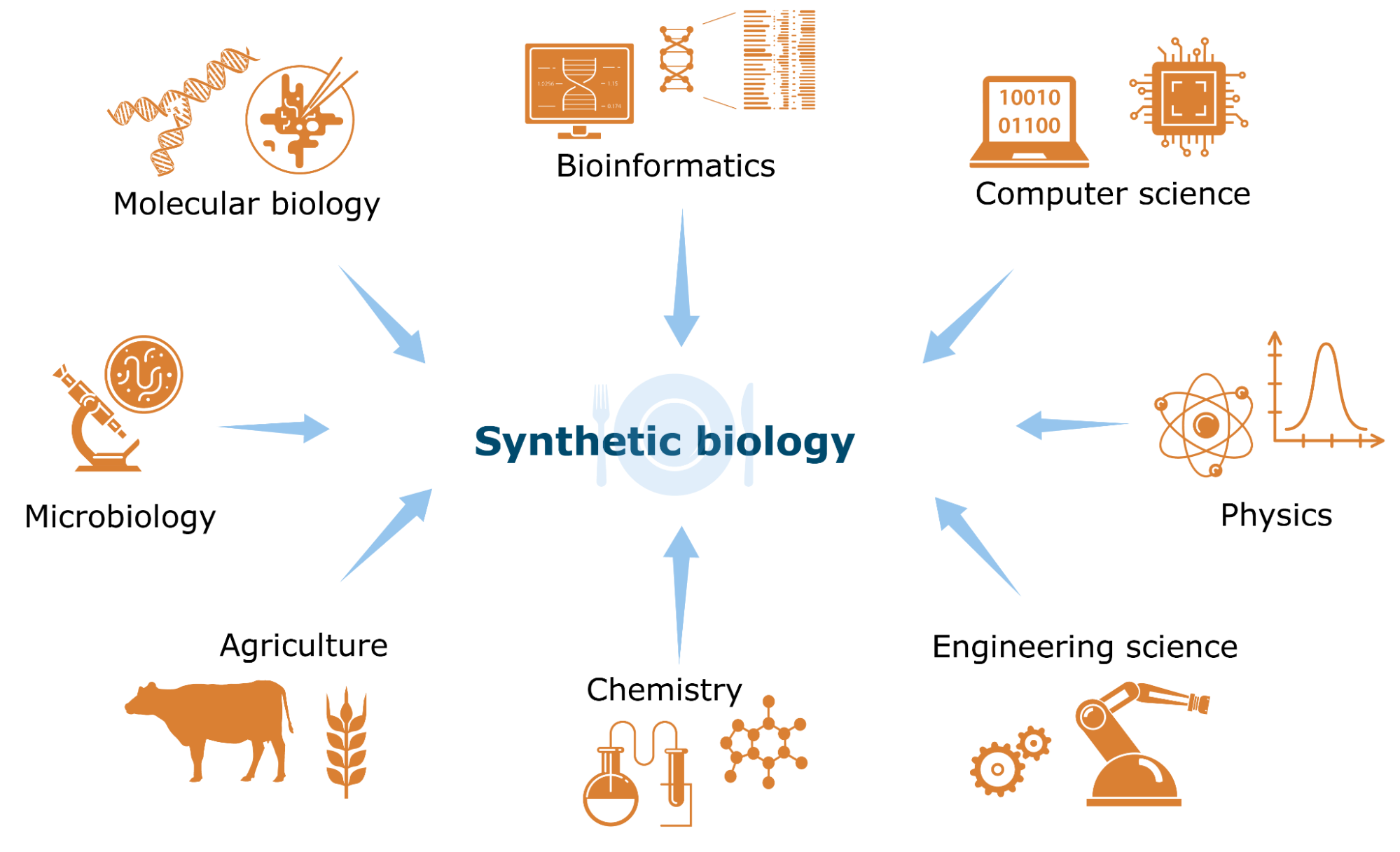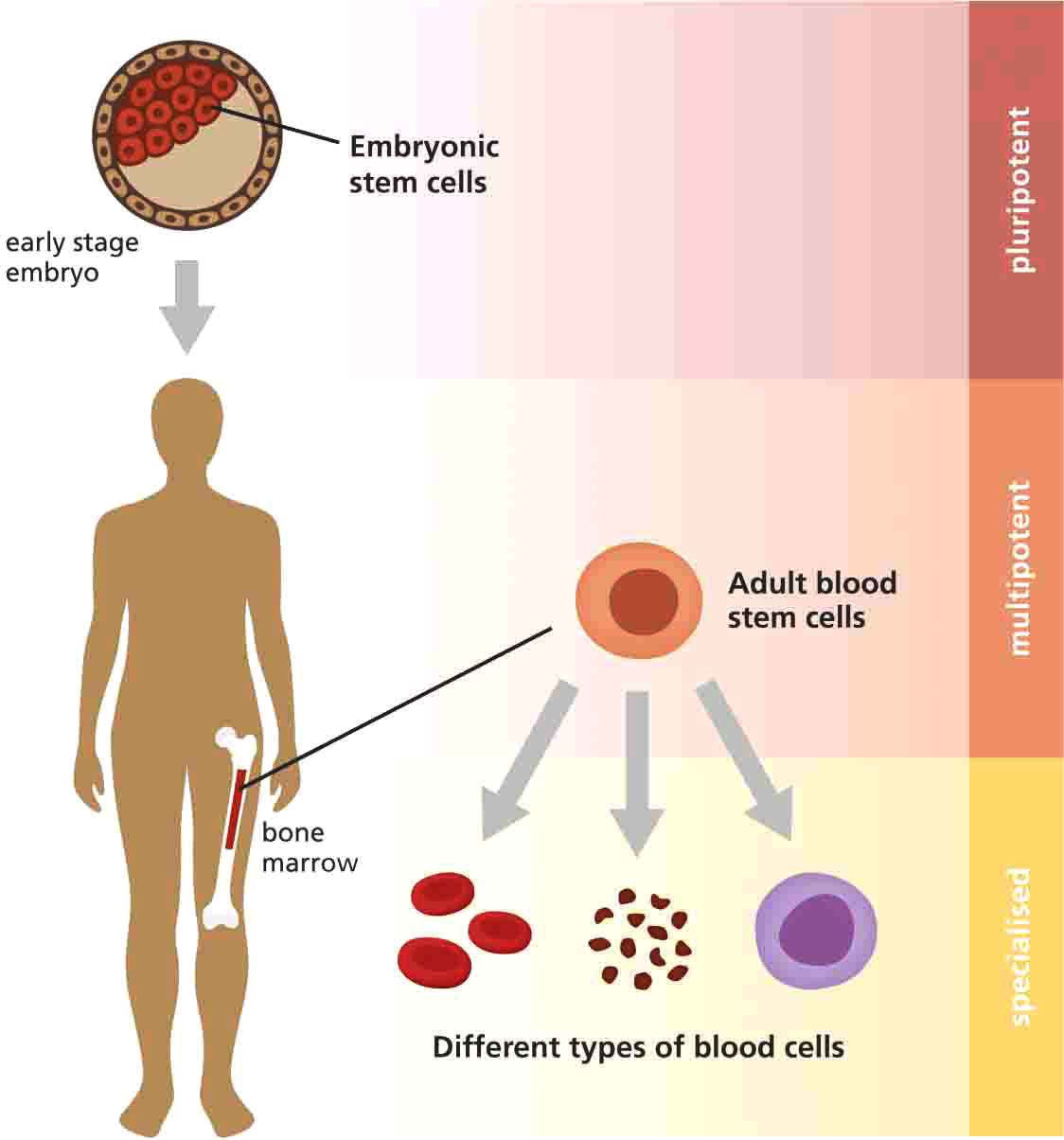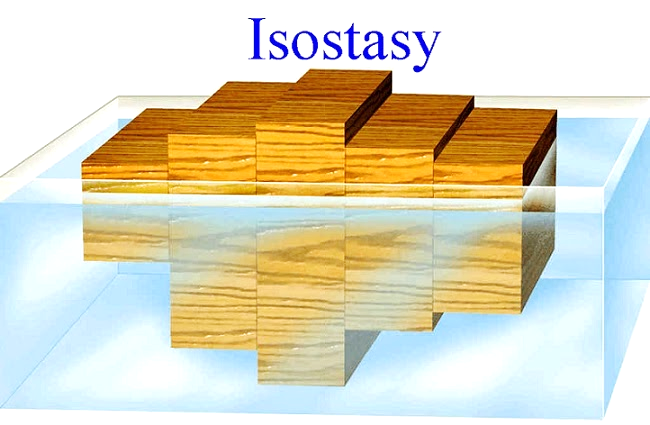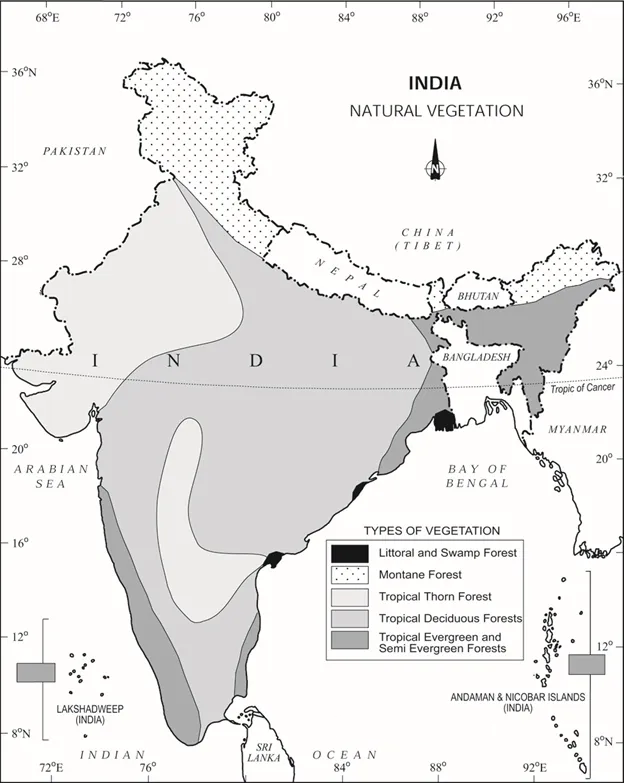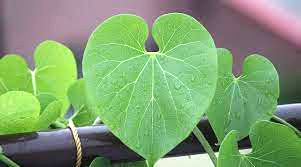Science & Technology
Synthetic Biology
For Prelims: Synthetic Biology, Applications of Synthetic Biology, Different National and International Laws and Conventions.
For Mains: Biotechnology, Scientific Innovations & Discoveries, intellectual property rights, National Policy on Synthetic Biology
Why in News?
Recently, the Department of Biotechnology, Ministry of Science & Technology released a draft foresight paper on synthetic biology.
- Synthetic biology has multifarious applications of energy, agriculture and biofuels. Thus, there is always a perceived threat of components releasing into the open environment.
- Therefore, the document stresses on the need for a national policy that can consolidate India’s stand on the issue.
What is Synthetic Biology?
- The term ‘synthetic biology’ was first used by Barbara Hobomin in 1980, to describe bacteria that had been genetically engineered using recombinant DNA technology.
- Synthetic biology refers to the science of using genetic sequencing, editing, and modification to create unnatural organisms or organic molecules that can function in living systems.
- Synthetic biology enables scientists to design and synthesise new sequences of DNA from scratch.
- The term was used to describe the synthesis of unnatural organic molecules that function in living systems.
- More broadly in this sense, the term has been used with reference to efforts to ‘redesign life’.
What are Applications of Synthetic Biology?
- Standardised Biological Parts- identify and categorise standardised genomic parts that can be used (and synthesised quickly) to build new biological systems.
- Applied Protein Design- redesign existing biological parts and expand the set of natural protein functions for new processes.
- For e.g, Modified rice to produce beta-carotene (a nutrient usually associated with carrots), that prevents Vitamin A deficiency.
- Natural Product Synthesis- engineer microbes to produce all of the necessary enzymes and biological functions to perform complex multistep production of natural products.
- For e.g, Microorganisms harnessed for bioremediation (use of living microorganisms to degrade environmental contaminants into less toxic forms) to clean pollutants from water, soil and air.
- Synthetic Genomics- design and construct a ‘simple’ genome for a natural bacterium.
- For e.g, Yeast engineered to produce rose oil as an eco-friendly and sustainable substitute for real roses that perfumers use to make luxury scents.
What are Potential Negative Impacts of Synthetic Biology?
- Negative Environmental Health: The intentional or accidental release of genetically engineered organisms into the environment could have significant negative impacts on both human and environmental health.
- Misuse of these technologies and a failure to account for unintended consequences could cause irreversible environmental damage.
- Do-It-Yourself Biology: It’s a movement of “citizen scientists” interested in synthetic biology experiments that has become an international phenomenon over the last decade.
- Often with little prior knowledge of the field, enthusiasts meet in makeshift labs to take crash courses in biotechnology and conduct hands-on experiments.
- Ethical Concerns: Many of the ethical questions relevant to synthetic biology are similar to ethical discussions related to genome editing like:
- Are humans crossing moral boundaries by redesigning organisms with synthetic biology techniques?
- If synthetic biology yields new treatments and cures for diseases, who in our society will have access to them?
What are Governance, Policy And Regulatory Aspects Relevant To Synthetic Biology?
- International Bodies & Agreements:
- Convention on Biological Diversity (CBD)
- Cartagena Protocol on Biosafety
- Nagoya Protocol on Access and Benefit Sharing
- Nagoya-Kuala Lumpur Supplementary Protocol
- Food and Agricultural Organisation (FAO)
- Convention on International Trade in Endangered Species of Wild Fauna and Flora (CITES)
- International Union for the Conservation of Nature (IUCN)
- Agreement on Trade Related Aspects of Intellectual Property Rights (TRIPS)
- UN Convention on the Law of the Sea (UNCLOS)
- Biological Weapons Convention.
- India is a party to all the International governance bodies discussed above.
- Convention on Biological Diversity (CBD)
- Indian Regulatory System:
Way Forward
- India is yet to formally come up with its national strategy on synthetic biology (both policy and regulatory).
- In this context, India’s policy and regulatory framework needs to focus on issues like,
- Defining what constitutes the science of synthetic biology.
- What kind of research and development priorities will be made for the public sector.
- Guidance for the private sector for future research and what all considerations will be undertaken related to relevant policy frameworks, including those in intellectual property rights.
- How India will regulate the development and use of this technology, considering issues related to environment and socio-economics.
- While making a national strategy India should consider Principles of International Law which are:
- The precautionary principle
- State sovereignty and prevention of transboundary harm.
- State responsibility and Environment Impact Assessment
- Principles of access to information, public participation and access to justice
- People’s right to self-determination and free prior informed consent
- Sustainable development and inter-generational equity
Indian Economy
India Bans Import of Foreign Drones
For Prelims: Drone Shakti Scheme, Drone Rules 2021.
For Mains: Ban on drone import and its significance.
Why in News?
Recently, the Directorate General of Foreign Trade (DGFT) under the Ministry of Commerce and Industry has banned the import of foreign drones.
- The move comes after the Union Budget 2022 proposed the Drone Shakti scheme to facilitate application and use of 'drones as service' in the country.
- The import of drone components, however, has not been banned and will not require any approvals.
- The import of drones for defense and security purposes will also be allowed subject to approval from the DGFT.
- The move aims to promote made-in-India drones.
What is the Background?
- Drone Rules: In 2021, the Ministry notified liberalized drone rules with the aim to encourage R&D and to make India a drone hub.
- It abolished several permissions and approvals. The number of forms that need to be filled was reduced from 25 to five and the types of fee brought down from 72 to 4.
- No permission is required for operating drones in green zones and no remote pilot licence is necessary for non-commercial use of micro and nano drones.
- Payloads up to 500kg have been allowed so the drones can be used as unmanned flying taxis.
- Further, foreign ownership of companies operating drones has also been permitted.
- PLI Scheme for Drones: The government also approved a Production-Linked Incentive (PLI) scheme for Drones and their components with an allocation of Rs. 120 crore for three financial years.
- The g PLI Scheme for the drones and drone components industry addresses the strategic, tactical, and operational uses of this revolutionary technology.
- In September 2021, the DGCA (Directorate General of Civil Aviation) launched an interactive airspace map to help drone operators check for no-fly zones or where they need to undergo certain formalities before flying a drone.
- The Indian government has chosen drones to help achieve its ambition of creating a comprehensive e-property ledger under the SVAMITVA (Survey of Villages and Mapping with Improvised Technology in Village Areas) scheme launched in April 2020.
What is the Drone Shakti Scheme?
- The Union Budget pushed for promotion of drones through startups and skilling at Industrial Training Institutes (ITIs).
- Startups will be promoted to facilitate ‘Drone Shakti’ through varied applications and for Drone-As-A-Service (DrAAS). Courses for skilling will also be started in selected ITIs across all States.
- DrAAS allows enterprises to avail various services from drone companies, removing the need for them to invest in drone hardware or software, pilots, and training programmes.
- Sectors where drones can be employed are endless. These include photography, agriculture, mining, telecom, insurance, telecom, oil & gas, construction, transport, disaster management, geo-spatial mapping, forest and wildlife, defence and law enforcement to name a few.
- Drones will also be promoted for crop assessment, digitisation of land records, spraying of insecticides and nutrients (Kisan Drones).
- The drone services industry is expected to grow to over Rs 30,000 crore in next three years and generate over five lakh jobs.
What is a Drone?
- It is a layman terminology for Unmanned Aircraft (UA).
- Originally developed for the military and aerospace industries, drones have found their way into the mainstream because of the enhanced levels of safety and efficiency they bring.
- A drone’s autonomy level can range from remotely piloted (a human controls its movements) to advanced autonomy, which means that it relies on a system of sensors and LiDAR (Light Detection and Ranging) detectors to calculate its movement.
What are the various Applications of Drones? |
|
| Agriculture: |
|
| Healthcare: |
|
| Inventory Management: |
|
| Security and Surveillance: |
|
| Disaster Management: |
|
Science & Technology
Human Immunodeficiency Virus (HIV)
For Prelims: Human Immunodeficiency Virus (HIV), Stem Cells and its types.
For Mains: Achievements of Indians in Science & Technology, Human Immunodeficiency Virus (HIV) and its prevalence.
Why in News?
Recently, a US patient with leukemia has become the first woman and the third person to date to be cured of HIV after receiving a stem cell transplant from a donor who was naturally resistant to the virus that causes Acquired ImmunoDeficiency Syndrome (AIDS).
- Leukemia is a blood cancer caused by a rise in the number of white blood cells in the body.
- AIDS is a set of symptoms or syndrome caused by HIV. But it is not necessary that a person infected with HIV will definitely develop AIDS.
What is Human Immunodeficiency Virus (HIV)?
- HIV attacks CD4, a type of White Blood Cell (T cells) in the body’s immune system.
- T cells are those cells that move around the body detecting anomalies and infections in cells.
- After entering the body, HIV multiplies itself and destroys CD4 cells, thus severely damaging the human immune system.
- Once this virus enters the body, it can never be removed.
- The CD4 count of a person infected with HIV reduces significantly. In a healthy body, CD4 count is between 500- 1600, but in an infected body, it can go as low as 200.
What is the Prevalence of HIV/AIDS in India?
- As per the India HIV Estimation 2019 report, the estimated adult (15 to 49 years) HIV prevalence trend has been declining in India since the epidemic’s peak in the year 2000 and has been stabilising in recent years.
- In 2019, HIV prevalence among adult males was estimated at 0.24% and among adult females at 0.20% of the population.
- There were 23.48 lakh Indians living with HIV in 2019. Maharashtra had the maximum numbers followed by Andhra Pradesh and Karnataka.
What are Stem Cells?
- Stem cells are special cells that can make copies of themselves and change into the many different kinds of cells that the body needs. They have two unique properties that enable them to do this:
- They can divide over and over again to produce new cells.
- As they divide, they can change into the other types of cell that make up the body.
- There are several kinds of stem cells and they are found in different parts of the body at different times.
- Cancer and cancer treatment can damage the hematopoietic stem cells. Hematopoietic stem cells are stem cells that turn into blood cells.
Why are Stem Cells useful?
- Research: It helps in understanding the basic biology of how living things work and what happens in different types of cell during disease.
- Therapy – In replacing lost or damaged cells that the bodies can’t replace naturally.
What are the Three Main Types of Stem Cell?
- Embryonic Stem Cells:
- They supply new cells for an embryo as it grows and develops into a baby.
- These stem cells are said to be pluripotent, which means they can change into any cell in the body.
- Adult Stem Cells:
- They supply new cells as an organism grows and to replace cells that get damaged.
- Adult stem cells are said to be multipotent, which means they can only change into some cells in the body, not any cell, for example:
- Blood (or 'haematopoietic') stem cells can only replace the various types of cells in the blood.
- Induced Pluripotent Stem Cells:
- ‘Induced’ means that they are made in the lab by taking normal adult cells, like skin or blood cells, and reprogramming them to become stem cells.
- Just like embryonic stem cells, they are pluripotent so they can develop into any cell type.
What is Stem Cells Transplant?
- A bone marrow transplant is a medical treatment that replaces one’s bone marrow with healthy cells. The replacement cells can either come from the person’s own body or from a donor.
- A bone marrow transplant is also called a stem cell transplant or, more specifically, a hematopoietic stem cell transplant.
- Transplantation can be used to treat certain types of cancer, such as leukemia, myeloma, and lymphoma, and other blood and immune system diseases that affect the bone marrow.
Geography
Tectonic Evolution of Greater Maldive Ridge
For Prelims: Greater Maldive Ridge, Tectonic Plate, Moho Discontinuity, Isostasy, Transform Fault, seismic waves.
For Mains: Important Geophysical Phenomena, Earthquakes, Volcanoes, Geographical Features and their Location, Evolution of Continents and Plate Tectonics.
Why in News?
In a recent study, an Indian researcher traced the tectonic evolution and the nature of the Greater Maldive Ridge (GMR).
- It is a very crucial geodynamic feature in the western Indian Ocean whose origin has been the centre of many a scientific debate.
- The study was conducted by the Indian Institute of Geomagnetism, Mumbai, an autonomous institute of the Department of Science & Technology, Govt. of India.
What is a Tectonic Plate?
- A tectonic plate (also called lithospheric plate) is a massive, irregularly-shaped slab of solid rock, generally composed of both continental and oceanic lithosphere.
- The lithosphere includes the crust and top mantle with its thickness range varying between 5-100 km in oceanic parts and about 200 km in the continental areas.
- The concept of Tectonic Plates was first introduced in 1967.
- A tectonic plate may be a continental plate or an oceanic plate, depending on which of the two occupies the larger portion of the plate.
- The Pacific plate is largely an oceanic plate whereas the Eurasian plate is a continental plate.
- The tectonic plates are not fixed but constantly move horizontally over the Asthenosphere as rigid units.
- Sometimes these plates collide, move apart, or slide next to each other which leads to Earthquakes or Volcanic Eruptions.
What is a Mid-Ocean Ridge?
- A mid-ocean ridge or mid-oceanic ridge is an underwater mountain range, formed by plate tectonics.
What is the Mohorovičić Discontinuity?
- The Mohorovicic Discontinuity, or "Moho," is the boundary between the crust and the mantle. The red line in the diagram shows its location.
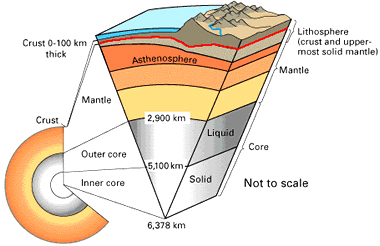
- In geology the word "discontinuity" is used for a surface at which seismic waves change velocity.
- One of these surfaces exists at an average depth of 8 kilometres beneath the ocean basin and at an average depth of about 32 kilometres beneath the continents.
- At this discontinuity, seismic waves accelerate. This surface is known as the Mohorovicic Discontinuity or often simply referred to as the "Moho."
- The Mohorovicic Discontinuity was discovered in 1909 by Andrija Mohorovicic, a Croatian seismologist.
What is the Greater Maldive Ridge?
- The Maldive Ridge is an aseismic ridge that is not associated with earthquake activities. This ridge, located in the western Indian Ocean, southwest of India, is not well investigated.
- It is of paramount importance to gain knowledge on the structure and geodynamics of aseismic ridges (as it provides valuable inputs towards understanding the evolution of ocean basins).
What is the Study About?
- It has chalked the possible geological cross-sections along the GMR for the first time with the help of satellite-derived high-resolution gravity data.
- Satellite-derived gravity anomalies are very helpful in deciphering the crustal architecture where traditional shipborne geophysical data are either not available or scanty.
- The researchers postulated that the GMR may be underlain by an oceanic crust.
- It provides the crustal architecture and the state of gravitational equilibrium between Earth's crust and mantle (isostasy) of the Greater Maldive Ridge segment of the larger Chagos-Laccadive Ridge (CLR) system.
- Their study, based mainly on the interpretation of gravity anomalies (small differences in the pull of gravity caused by the lateral variations of density within the subsurface) with broadband seismic and refraction seismic data, provided for the first time a three-dimensional picture of the variation of Moho along the Greater Maldive Ridge and the adjoining ocean basins.
- The depth to the boundary between the earth’s crust and the mantle or the Mohorovicic discontinuity (Moho) over the GMR was systematically mapped along with the finer variation of effective elastic thickness (Te) at the place.
- The study found that Moho is deeper over the MR segment and shallows southwards in the Deep Sea Channel region (DSC).
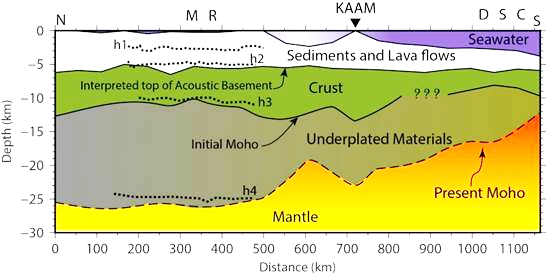
- However, the effective elastic thickness (a proxy for the strength of the lithosphere) values were lower over the MR compared to the DSC region.
- The MR and DSC region may probably be oceanic in nature with the presence of underplated materials associated with the Reunion hotspot volcanism.
- Most of the volcanic activities are concentrated along or adjacent to plate boundaries, but there are some important exceptions in which this activity occurs within plates, called the Hotspots.
- There are about 40 to 50 hot spots estimated to be around the world.
- The research suggests that MR might have formed in the close vicinity of the Mid-Oceanic Ridge (where creation of a new ocean floor occurs due to divergent motion of lithospheric plates or spreading centre).
- Meanwhile, the DSC region was under a long transform fault (offset between the spreading centres, which neither create nor destroy lithosphere), which hindered melt production and gave rise to the gap between Chagos and MR during the Plume-ridge interaction.
- A mantle plume is an area under the crust of Earth, where magma is hotter than surrounding magma.
- A transform fault, in geology and oceanography, is a type of fault in which two tectonic plates slide past one another.
What is the Significance of the Study?
- The study can help reconstruct the original Gondwanaland break up and dispersal that led to present-day configuration of continents, continental fragments, and formation of ocean basins in the Indian Ocean.
- The results from their study can provide additional constraints in understanding the plate-tectonic evolution of the Indian Ocean, better.
Governance
Reserved Forest
For Prelims: Reserved Forest, Protected Forests, Village forest, Tropical Evergreen, Semi Evergreen Forests, Tropical Deciduous Forests, Montane Forests, Tropical Thorn forests, Swamp Forests
For Mains: Types of Forests in India and need to conserve Forests, Steps taken to preserve forests in India.
Why in News?
Recently, the Delhi government has notified forest land in two villages in South Delhi as ‘reserved forest’, which will give them legal status.
- It was notified under Section 20 (declaration of reserved forest) of Indian Forest Act, 1927.
What are the Different Types of Forests?
- Reserved Forests: Reserve forests are the most restricted forests and are constituted by the State Government on any forest land or wasteland which is the property of the Government.
- In reserved forests, local people are prohibited, unless specifically allowed by a Forest Officer in the course of the settlement.
- Protected Forests: The State Government is empowered to constitute any land other than reserved forests as protected forests over which the Government has proprietary rights and the power to issue rules regarding the use of such forests.
- This power has been used to establish State control over trees, whose timber, fruit or other non-wood products have revenue-raising potential.
- Village forest: Village forests are the one in which the State Government may assign to ‘any village community the rights of Government to or over any land which has been constituted a reserved forest’.
How are Forests Categorised Based on Rainfall in India?
- Tropical Evergreen and Semi Evergreen Forests:
- These forests are found in the western slope of the Western Ghats, hills of the northeastern region and the Andaman and Nicobar Islands.
- They are found in warm and humid areas with an annual precipitation of over 200 cm and mean annual temperature above 22oC.
- Tropical evergreen forests are well stratified, with layers closer to the ground and are covered with shrubs and creepers, with short structured trees followed by a tall variety of trees.
- In these forests, trees reach great heights up to 60 m or above. There is no definite time for trees to shed their leaves, flowering and fruition. As such these forests appear green all the year round.
- The semi evergreen forests are found in the less rainy parts of these regions. Such forests have a mixture of evergreen and moist deciduous trees. The undergrowing climbers provide an evergreen character to these forests.
- Tropical Deciduous Forests:
- These are the most widespread forests in India. They are also called the monsoon forests. They spread over regions which receive rainfall between 70-200 cm. On the basis of the availability of water, these forests are further divided into moist and dry deciduous.
- Montane Forests:
- In mountainous areas, the decrease in temperature with increasing altitude leads to a corresponding change in natural vegetation.
- Mountain forests can be classified into two types, the northern mountain forests and the southern mountain forests.
- Tropical Thorn forests:
- Tropical thorn forests occur in the areas which receive rainfall less than 50 cm. These consist of a variety of grasses and shrubs. It includes semi-arid areas of south west Punjab, Haryana, Rajasthan, Gujarat, Madhya Pradesh and Uttar Pradesh.
- In these forests, plants remain leafless for most part of the year and give an expression of scrub vegetation.
- Swamp Forests:
- They are found along the Andaman and Nicobar Islands and the delta area of the Ganga and the Brahmaputra.
- Other areas of significance are the Mahanadi, the Godavari and the Krishna deltas.
- Some of these forests are dense and impenetrable. Only a limited number of plants are found in these evergreen forests.
- They have roots that consist of soft tissue so that the plant can breathe in the water.
- It consists mainly of whistling pines, mangrove dates, palms, and bulletwood.
- They are found along the Andaman and Nicobar Islands and the delta area of the Ganga and the Brahmaputra.
What is the Status of Forest Cover in India?
- According to the India State of Forest Report-2021, the forest and tree cover in the country continues to increase with an additional cover of 1,540 square kilometres over the past two years.
- Madhya Pradesh has the largest forest cover in the country followed by Arunachal Pradesh, Chhattisgarh, Odisha and Maharashtra.
- In terms of forest cover as percentage of total geographical area, the top five States are Mizoram, Arunachal Pradesh, Meghalaya, Manipur and Nagaland.
- The states that have shown the highest increase in forest cover are Telangana (3.07%), Andhra Pradesh (2.22%) and Odisha (1.04%).
- Five states in the Northeast – Arunachal Pradesh, Manipur, Meghalaya, Mizoram and Nagaland have all shown loss in forest cover.
Important Facts For Prelims
Tarapur Massacre of Bihar
Why in News
Recently, Bihar Chief Minister has announced that 15th February would be commemorated as “Shahid Diwas” in memory of the 34 freedom fighters who were killed by police in Tarapur town (now subdivision) of Bihar’s Munger district 90 years ago.
- The Tarapur massacre was the biggest carried out by the British police after the one in Jallianwala Bagh in Amritsar in 1919.
What Happened in Tarapur?
- On 15th February, 1932, a group of young freedom fighters planned to hoist an Indian national flag at Thana Bhawan in Tarapur.
- Police were aware of the plan, and several officers were present at the spot.
- A 4,000-strong crowd pelted the police with stones, injuring an officer of the civil administration.
- The police responded by opening indiscriminate fire on the crowd. After about 75 rounds were fired, 34 bodies were found at the spot, even though there were claims of an even larger number of deaths.
- But only 13 of the dead could be identified.
What Triggered the Protest?
- The hanging of Bhagat Singh, Sukhdev, and Rajguru in Lahore on 23th March, 1931, sent a wave of grief and anger around the country.
- Following the collapse of the Gandhi-Irwin Pact, the Mahatma was arrested in early 1932.
- By this Pact, Gandhiji consented to participate in a Round Table Conference (the Congress had boycotted the first Round Table Conference) in London and the government agreed to release the political prisoners.
- The Congress was declared an illegal organization, and Nehru, Patel, and Rajendra Prasad were also thrown into jail.
- In Munger, freedom fighters Srikrishna Singh, Nemdhari Singh, Nirapad Mukherjee, Pandit Dasrath Jha, Basukinath Rai, Dinanath Sahay, and Jaymangal Shastri were arrested.
- A call given by the Congress leader Sardar Shardul Singh Kavishwar to raise the tricolour over government buildings resonated in Tarapur.
Important Facts For Prelims
Guduchi
Why in News
Recently, the Ministry of Ayush reiterated that Giloy/Gudduchi (Tinospora cordifolia) is safe and as per available data, and does not produce any toxic effect.
- Earlier, certain sections of the media have falsely linked Giloy/Guduchi to liver damage.
- The Ministry of Ayush noted that the safety of a drug depends on how it is being used. Dosage is one of the important factors that determine the safety of a particular drug.
What is Guduchi?
- Guduchi is a climbing shrub that grows on other trees, from the botanical family Menispermaceae.
- The plant is native to India but also found in China and tropical areas of Australia and Africa.
- People have long used it to treat a wide range of issues, including fever, infections, diarrhoea, and diabetes.
What are Medicinal Applications of Guduchi?
- A special focus has been made on its health benefits in treating various metabolic disorders and its potential as an immune booster.
- It's use as antioxidant, anti-hyperglycemic, anti-hyperlipidemic, hepatoprotective, cardiovascular protective, neuroprotective, osteoprotective, radioprotective, anti-anxiety, adaptogenic, analgesic, anti-inflammatory, antipyretic, anti-diarrheal, anti-ulcer, anti-microbial, and anti-cancer have been well established.
- It is used as a major component of therapeutics for ameliorating metabolic, endocrinal, and several other ailments, aiding in the betterment of human life expectancy.
- It is a popularly known herb for its immense therapeutic applications in traditional systems of medicine and has been used in the management of Covid-19.

